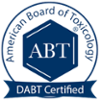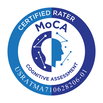Neurotoxicology is a field of study within the field of toxicology concerned specifically with the interactions between exogenous substances and the nervous system.
Neurotoxicants are synthetic chemicals with the inherent ability to damage the nervous system.
Neurodegenerative diseases are neurological disorders that progress relentlessly resulting in permanent damage to the nervous system.
Interactions are defined as effects which are not observed when two events occur in isolation. The results of these interactions can be additive or synergistic. Interactions can occur between neurodegenerative diseases and the effects of neurotoxicants that share mechanism of action in common.
A long standing thesis in modern medicine and toxicology, which extends as far back as the days of Paracelsus, is that "the dosage differentiates a therapeutic from a poison". The reasoning behind this bit of conventional scientific wisdom is that there is no chemical which is not a poison. The list of side effects of modern medications is a well-recognized example of this scientific observation.
Adverse effects of chemicals and drugs occur when these compounds act via mechanisms shared in common with those implicated in a disease process; this is why you must let your doctor know if you have a preexisting medical condition that can be exacerbated by a drug before you start taking a new medication. With respect to neurodegenerative diseases, these interactions include but are not limited to: increasing protein aggregation; enhancing neuroinflammation; and/or increasing oxidative stress (Heinemann et al., 2016; Gunnarsson and Bodin, 2019; Harischandra et al., 2019; Chiang et al., 2019).
When exposure to neurotoxicants and neurodegenerative disease occurs in the same individual, additive or synergistic interactions can hasten the subclinical course of the disease resulting in a younger age at onset of overt symptoms which can interfere with activities of daily living.
Dr. Marcia Ratner, has devoted her entire career to understanding and investigating these interactions. Her years of education, post-doctoral training and board certifications demonstrate her professional commitment to expertise in these areas. Her publication record reflects upon her research aimed at identifying chemicals that can unmask latent neurodegenerative disease and/or hasten disease onset as well as her ongoing efforts to identify novel therapeutics aimed at forestalling disease onset and slowing disease progression. She has carefully documented and summarized the peer-reviewed scientific and medical literature on these interactions on the various pages of the Neurotoxicants.com website. This information is presented in an easy to follow well-referenced format for the informational and educational purposes of lay persons as well as medical professionals who seek a trustworthy source of information on these topics.
Last update: June 9, 2024
Neurotoxicants are synthetic chemicals with the inherent ability to damage the nervous system.
Neurodegenerative diseases are neurological disorders that progress relentlessly resulting in permanent damage to the nervous system.
Interactions are defined as effects which are not observed when two events occur in isolation. The results of these interactions can be additive or synergistic. Interactions can occur between neurodegenerative diseases and the effects of neurotoxicants that share mechanism of action in common.
A long standing thesis in modern medicine and toxicology, which extends as far back as the days of Paracelsus, is that "the dosage differentiates a therapeutic from a poison". The reasoning behind this bit of conventional scientific wisdom is that there is no chemical which is not a poison. The list of side effects of modern medications is a well-recognized example of this scientific observation.
Adverse effects of chemicals and drugs occur when these compounds act via mechanisms shared in common with those implicated in a disease process; this is why you must let your doctor know if you have a preexisting medical condition that can be exacerbated by a drug before you start taking a new medication. With respect to neurodegenerative diseases, these interactions include but are not limited to: increasing protein aggregation; enhancing neuroinflammation; and/or increasing oxidative stress (Heinemann et al., 2016; Gunnarsson and Bodin, 2019; Harischandra et al., 2019; Chiang et al., 2019).
When exposure to neurotoxicants and neurodegenerative disease occurs in the same individual, additive or synergistic interactions can hasten the subclinical course of the disease resulting in a younger age at onset of overt symptoms which can interfere with activities of daily living.
Dr. Marcia Ratner, has devoted her entire career to understanding and investigating these interactions. Her years of education, post-doctoral training and board certifications demonstrate her professional commitment to expertise in these areas. Her publication record reflects upon her research aimed at identifying chemicals that can unmask latent neurodegenerative disease and/or hasten disease onset as well as her ongoing efforts to identify novel therapeutics aimed at forestalling disease onset and slowing disease progression. She has carefully documented and summarized the peer-reviewed scientific and medical literature on these interactions on the various pages of the Neurotoxicants.com website. This information is presented in an easy to follow well-referenced format for the informational and educational purposes of lay persons as well as medical professionals who seek a trustworthy source of information on these topics.
Last update: June 9, 2024

